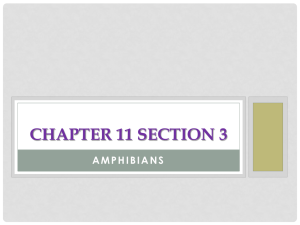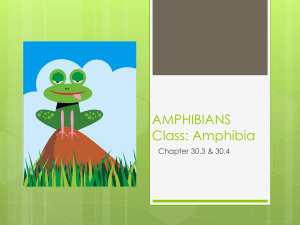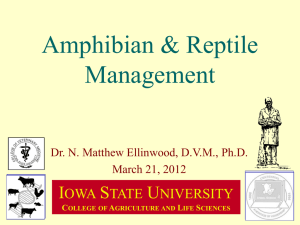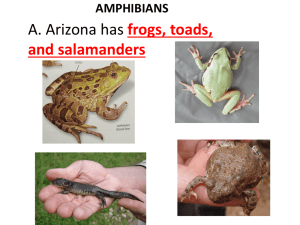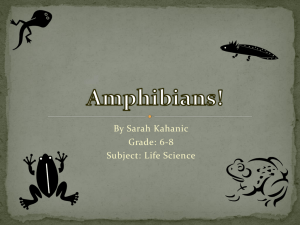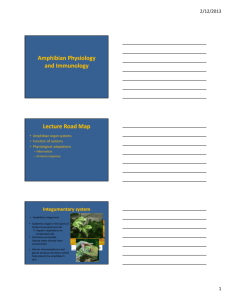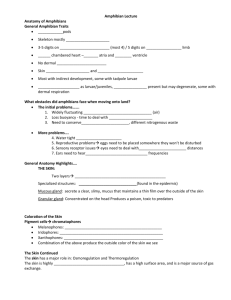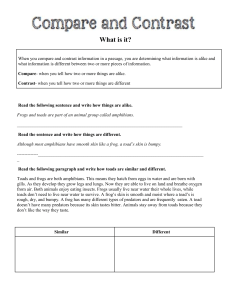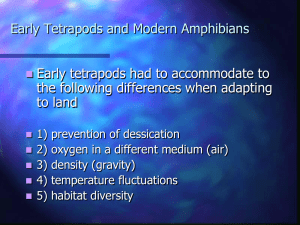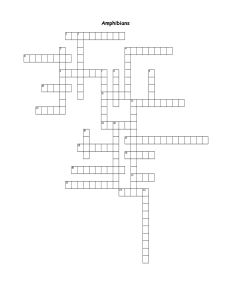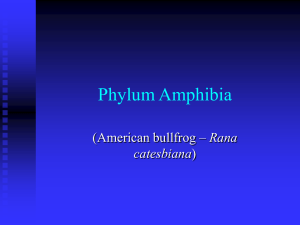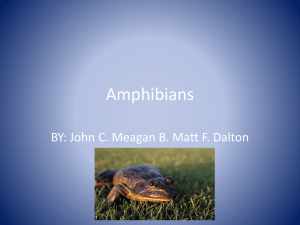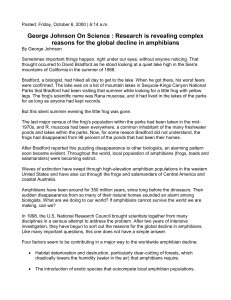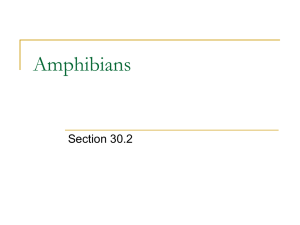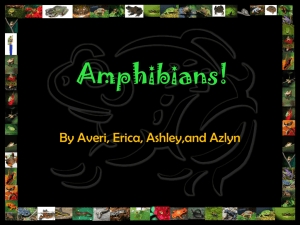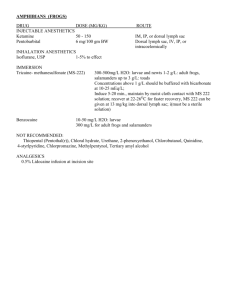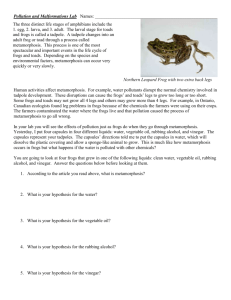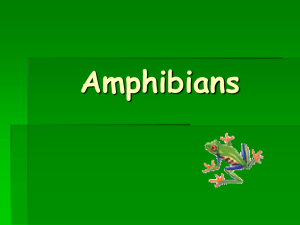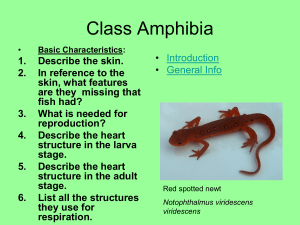Chapter 3, Section 1 – What is a Vertebrate
advertisement
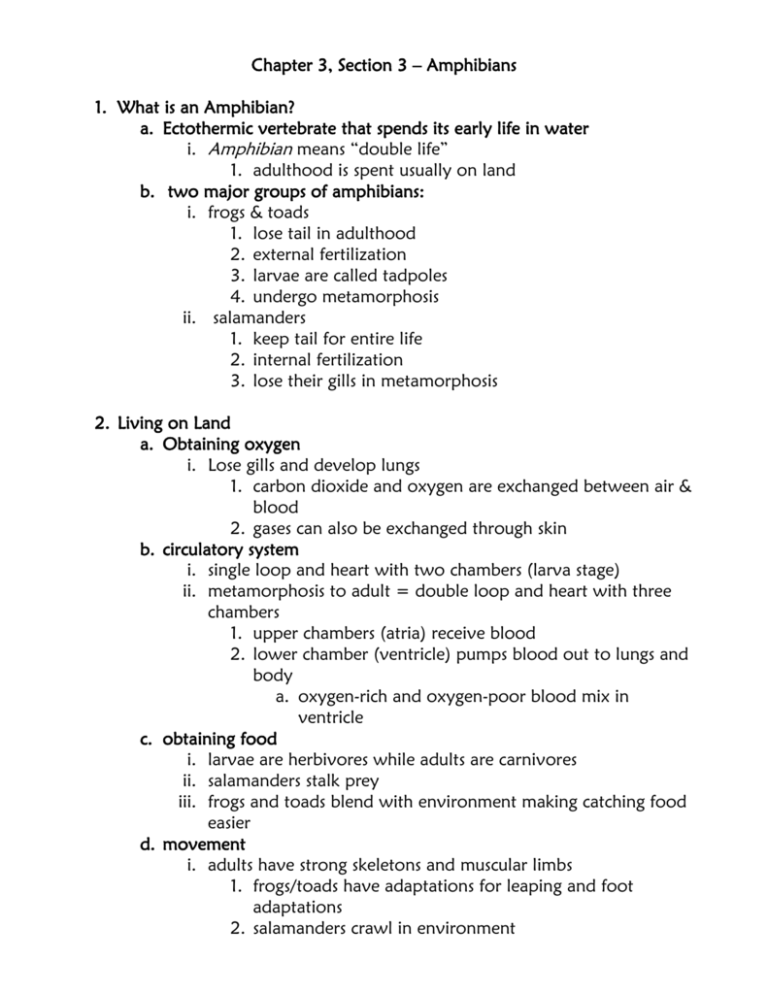
Chapter 3, Section 3 – Amphibians 1. What is an Amphibian? a. Ectothermic vertebrate that spends its early life in water i. Amphibian means “double life” 1. adulthood is spent usually on land b. two major groups of amphibians: i. frogs & toads 1. lose tail in adulthood 2. external fertilization 3. larvae are called tadpoles 4. undergo metamorphosis ii. salamanders 1. keep tail for entire life 2. internal fertilization 3. lose their gills in metamorphosis 2. Living on Land a. Obtaining oxygen i. Lose gills and develop lungs 1. carbon dioxide and oxygen are exchanged between air & blood 2. gases can also be exchanged through skin b. circulatory system i. single loop and heart with two chambers (larva stage) ii. metamorphosis to adult = double loop and heart with three chambers 1. upper chambers (atria) receive blood 2. lower chamber (ventricle) pumps blood out to lungs and body a. oxygen-rich and oxygen-poor blood mix in ventricle c. obtaining food i. larvae are herbivores while adults are carnivores ii. salamanders stalk prey iii. frogs and toads blend with environment making catching food easier d. movement i. adults have strong skeletons and muscular limbs 1. frogs/toads have adaptations for leaping and foot adaptations 2. salamanders crawl in environment e. amphibians in danger i. destruction of habitat ii. delicate skins & thin eggs shells iii. pollution
